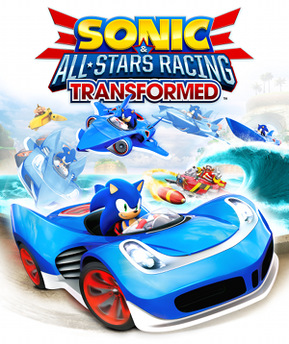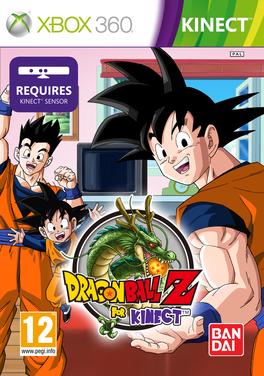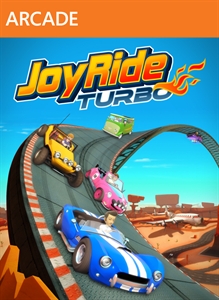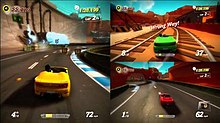
Rare Limited is a British video game developer and a studio of Xbox Game Studios based in Twycross, Leicestershire. Rare's games span the platform, first-person shooter, action-adventure, fighting, and racing genres. Its most popular games include the Battletoads, Donkey Kong, and Banjo-Kazooie series, as well as games like GoldenEye 007 (1997), Perfect Dark (2000), Conker's Bad Fur Day (2001), Viva Piñata (2006), and Sea of Thieves (2018).
Xbox Avatars are avatars and characters that represent users of the Xbox network service on the Xbox 360, Xbox One, and Xbox Series X and Series S video game consoles, Windows 10, and Windows 10 Mobile. Avatars originally debuted on the Xbox 360 as part of the "New Xbox Experience" system update released on November 19, 2008, updated on Xbox One with "New Xbox One Experience" Xbox One System Software on November 12, 2015, and reimagined with the release of the next generation character for Xbox One on October 11, 2018.

OutRun Online Arcade is a racing video game and the most recent release in the OutRun series. It was developed by Sumo Digital and published by Sega. The game was released on April 15, 2009 on Xbox Live Arcade and released exclusively in Europe for the PlayStation 3 a day later via the PlayStation Network. Gameplay involves players racing their choice of Ferrari through a selection of fifteen stages in the shortest time possible.

Kinect is a line of motion sensing input devices produced by Microsoft and first released in 2010. The devices generally contain RGB cameras, and infrared projectors and detectors that map depth through either structured light or time of flight calculations, which can in turn be used to perform real-time gesture recognition and body skeletal detection, among other capabilities. They also contain microphones that can be used for speech recognition and voice control.
BigPark was a Canadian video game developer owned by Microsoft Studios.

Sonic Free Riders is a motion controlled racing video game developed by Sonic Team and published by Sega for the Xbox 360. The game requires the use of Microsoft's Kinect peripheral and was a Kinect launch title in November 2010.

Kinect Sports is a sports video game developed by Rare and published by Microsoft Game Studios for the Xbox 360. The game utilizes the Kinect motion-sensing peripheral and was released in North America on 4 November 2010 as a launch title for Kinect, then, a few days later, in Europe and Australia.

Kinect Joy Ride is a racing game for Xbox 360 and a launch title for its Kinect hardware in 2010. The game was developed by BigPark and published by Microsoft Game Studios.

Kinect Adventures! is a sports video game released by Microsoft Game Studios for the Xbox 360. Released in 2010, it is a collection of five adventure and sports minigames and was developed by Good Science Studio, a subsidiary of Microsoft Game Studios. The game utilizes the Kinect motion camera and was offered as a pack-in game with the console. It was unveiled at the 2010 Electronic Entertainment Expo and went on to become the best-selling game on the Xbox 360, selling 24 million units worldwide.

Forza Motorsport 4 is a 2011 racing video game developed by Turn 10 Studios and published by Microsoft Studios for the Xbox 360. It is the fourth installment in the Forza series. It is the first title in the series to support the Kinect sensor alongside the traditional controller-based gameplay. It is the last Forza Motorsport released for Xbox 360; 2012's Forza Horizon and its 2014 sequel were the last two Forza games for the platform, while 2013's Forza Motorsport 5 was released as an Xbox One exclusive.

Burnout Crash! is a downloadable action racing video game in the Burnout series. It is developed by Criterion Games and published by Electronic Arts for PlayStation 3, Xbox 360, iOS via PlayStation Network, Xbox Live Arcade, and iTunes App Store.

Kinect Star Wars is a Star Wars video game developed by Terminal Reality and published by LucasArts and Microsoft Studios for the Xbox 360 that uses the Kinect motion peripheral. The game features four game modes: "Jedi Destiny", the primary game mode; podracing; Rancor Rampage; and Galactic Dance-off. In Jedi Destiny, players assume the role models of Jedi Padawans as they wield their lightsabers and use the Force to attack enemies mostly from the prequel trilogy using gestures. Podracing is a race-based game mode, Rancor Rampage is a destruction-based game mode, and Galactic Dance-off is a dance-based game mode similar to the Dance Central series.

Kinect: Disneyland Adventures is a 2011 open world video game developed by Frontier Developments and published by Microsoft Studios on Kinect for Xbox 360, with a remaster for Xbox One and Microsoft Windows developed by Asobo Studio released in 2017 as simply Disneyland Adventures. It takes place in a recreation of Disneyland Park in Anaheim, California, circa 2011, with themed games in place of many of the rides, while motion controls are used to play the game.

Haunt is a horror-themed adventure game developed by NanaOn-Sha and Zoë Mode, and published by Microsoft Studios. It was made available for download worldwide on the Xbox 360 via Xbox Live Arcade on January 18, 2012. The game requires the Kinect peripheral.

Tony Hawk's Pro Skater HD is a 2012 skateboarding video game in the Tony Hawk's series. Developed by Robomodo and published by Activision, Pro Skater HD is a high-definition remake of classic levels from Tony Hawk's Pro Skater, Pro Skater 2, and, via download, Pro Skater 3. It was released in 2012 for Xbox 360 through Xbox Live Arcade on July 18, for PlayStation 3 through PlayStation Network on August 28 and Steam on September 18. The game was delisted from Steam and all other digital marketplaces on July 17, 2017.

Sonic & All-Stars Racing Transformed is a kart racing video game developed by Sumo Digital and published by Sega. It was released for the PlayStation 3, Xbox 360, and Wii U in November 2012; for PlayStation Vita in December 2012; for Windows in January 2013; for Nintendo 3DS in February 2013; and for Android and iOS devices in January 2014. The PS3 and Wii U versions of the game were released in Japan on May 15, 2014.

Xbox is a video gaming brand that consists of five home video game consoles, as well as applications (games), streaming service Xbox Cloud Gaming, and online services such as the Xbox network and Xbox Game Pass. The brand is produced by Microsoft Gaming, a division of Microsoft.

Dragon Ball Z: For Kinect is a video game based on the anime series Dragon Ball Z for the Xbox 360's Kinect. Published by Namco Bandai Games under the Bandai label and developed by Spike Chunsoft, the game was released on October 2, 2012 in Europe and October 9, 2012 in the U.S. It is one of the few Dragon Ball games that never saw a release in Japan, although it still features a Japanese speech track available for international players.

Motocross Madness is a motocross racing video game that was developed by Austrian studio Bongfish and published by Microsoft Studios. It was released on April 10, 2013 on Xbox Live Arcade. It is a sequel to two Microsoft Windows games, 1998's Motocross Madness and 2000's Motocross Madness 2, which were developed by Rainbow Studios, who have since moved on to making the MX vs. ATV series.


















